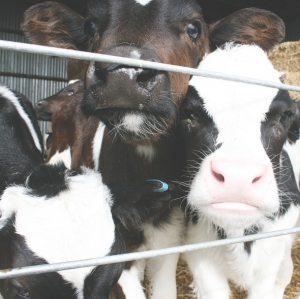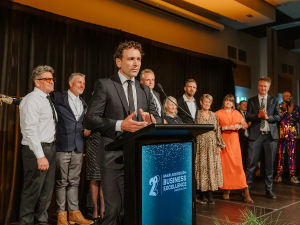Those are the headline findings of a Massey University research paper lead by Dr Jean Margerison soon to be published in the US Journal of Dairy Science, says specialist feed firm Bell-Booth.
Its product, Queen of Calves, which delivered the gains, is made from marine and land plant extracts and enhances the nutritional value and physical nature of milk, reducing the risk of fat deposition. There is a small nutritional value in the product itself, but “the major factor” is increase in energy a calf gets from milk.
“We’re talking about a calf that has a 10% higher growth rate; that has 23% more skeletal development at 12 weeks, that requires 16% less hard feed and 9% less milk to achieve its weaning weight, and in an 8-day shorter period,” Bell-Booth chief executive, Stephen Bell-Booth, explained to Rural News.
In the Massey work, heifers reared from Queen of Calves-treated calves, produced 28kgMS or 12% more milk solids in their first lactation (when correcting for fat and protein), equating to $170 more revenue per heifer at current payouts.
The decision by the US Journal of Dairy Science to publish the research is “the ultimate confirmation” the Queen of Calves nutrition programme enables farmers to significantly increase milk production, says Bell-Booth.
“It’s scientifically proven by the top dairy research publication in the world. This will send a strong message to vets who will appreciate the science behind the process, and to farm consultants looking to maximise the on-farm production and profitability of their clients.”
Margerison presented her initial findings from the controlled studies involving 40 calves to the American Dairy Science Association in 2011 (Rural News, August 2, 2011).
In that initial presentation a 12% or 49kg increase in milk solids in the calves’ first lactation was reported, as was on-farm survey data from 6,900 cows over two lactation cycles which found some farms using the product increased milk production by as much as 18%.
At the time it cost about $60 more per calf reared on a Queen of Calves programme than on traditional feeding methods.
Bell-Booth told Rural News the cost per calf this season will be about $80 over a conventional rearing regime.
He also points out the Massey work probably understates the gains as both the control and treated groups were given the first stage of Queen of Calves programme, the X-Factor product, for their first 18 days.
“We think that probably advanced the control group by about 6 days… Hundreds of farmers are telling us the time to weaning is reduced [by the full programme] by about two weeks.”
At present Bell-Booth is only recommending the programme for wholemilk feeding situations, not where powdered product is being used.
“All our research has been done with whole milk but we are researching use with milk powders.”

















